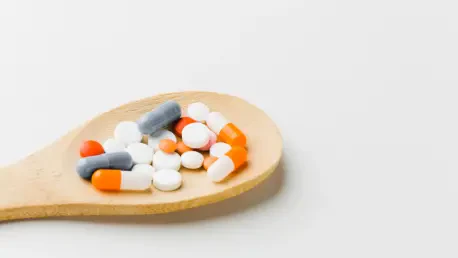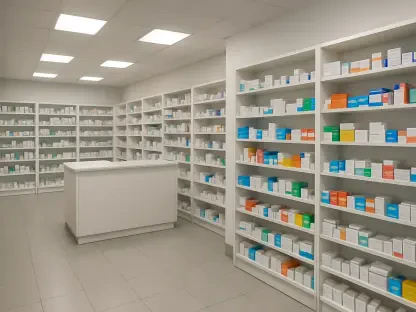In a monumental stride for pharmaceutical chemistry, researchers have developed a groundbreaking new class of ultra-stable chiral molecules that could redefine drug efficacy and safety. Chiral molecules, akin to a pair of gloves where the left and right hands are mirror images, play a pivotal role in drug design due to their unique three-dimensional configurations. These configurations are crucial as they influence how molecules interact with biological systems. While these molecules might share identical chemical compositions, their distinct spatial arrangements can radically impact both the efficacy and safety of pharmaceuticals. Hence, controlling chirality—ensuring a molecule cannot simply superimpose onto its mirror image—is of paramount importance in drug development.
Innovative Chiral Structures: A Paradigm Shift
Breakthrough and Unprecedented Stability
A revolutionary team from the University of Geneva, alongside the University of Pisa, has introduced a novel variety of chiral molecules with stereogenic centers composed of oxygen and nitrogen atoms. This is a departure from the conventional carbon-centric molecular structures and represents a significant progression in chemical design. The radical innovation in these structures presents chiral molecules of exceptional stability, overcoming a traditional barrier where molecules “flip,” or change into their mirror image over time, potentially rendering effective drugs inactive or even toxic. By utilizing state-of-the-art techniques like dynamic chromatography paired with quantum chemistry analysis, researchers have effectively exhibited that these innovative molecules exhibit outstanding stability, ensuring their structural integrity remains intact.
The research highlights that half of a particular molecule of interest would take an astonishing 84,000 years at average room temperature to transition into its mirror image, far exceeding current pharmaceutical stability standards. Another marked advancement is demonstrated in a distinct molecule requiring 227 days to undergo the same transformation at 25 degrees Celsius. These findings underscore the cutting-edge stability these structures offer for future drug applications, eliminating the necessity for specialized storage conditions commonly required to preserve molecular efficacy in pharmaceuticals.
Expanding Horizons in Structural Chemistry
The introduction of these highly stable stereogenic centers marks a promising development not confined to pharmaceuticals alone but also extending into advanced materials science. This molecular architecture allows for more innovative structural design possibilities within the chemical space, potentially revolutionizing synthetic methodologies. By offering chemists new avenues to construct highly stable three-dimensional molecular entities, research opens up unparalleled possibilities for designing drugs and advanced materials with enduring, locked-in geometric configurations.
This advancement not only provides a newfound level of control in molecular structuring but also enhances the development of safer and more reliable long-lasting pharmaceuticals. As chemists exploit these innovations in molecular science, the creation of drugs with greater longevity without complex preservation needs seems increasingly feasible. The application extends to high-performance materials designed to retain their configurations over extended periods, influencing multiple sectors that rely on durable chemical entities.
Multifaceted Impact and Future Prospects
Ensuring Drug Safety and Efficacy
The core implications of this research revolve around its contribution to drug safety and enhanced efficacy. Chiral molecules, given their non-superimposable nature, are crucial as they ensure precise interactions within biological systems. If a molecule were to transform into its mirror image, its biological effects would completely alter, potentially undermining the drug’s intended outcome. The outstanding stability of these new molecules addresses this issue, ensuring the drug maintains its intended interaction over long periods.
This not only heightens safety standards but also improves the quality of medicinal interventions available in the market. By incorporating ultra-stable chiral molecules, pharmaceutical companies can offer products that fulfill safety and effectiveness parameters more consistently, reducing instances of adverse effects stemming from molecular instability. Consequently, patients benefit with more dependable treatments, enhancing therapeutic outcomes and reducing associated healthcare costs due to inefficacies in drug formulations.
Transformative Potential Beyond Pharmaceuticals
Beyond pharmaceuticals, the potential applications in materials science hold equal intrigue. Stable chiral molecules can be foundational in developing new materials with unique properties and prolonged lifespans. By exploring these molecules’ geometric and structural novelties, fields such as electronics and nanotechnology could witness significant advancements, unlocking innovative possibilities in design and functionality previously unattainable due to limits in molecular stability.
For instance, crafting materials with integrated stability can lead to the innovation of reliable, energy-efficient components essential for modern technological applications. These developments signal a promising future where chemistry, empowered by these stable chiral molecule structures, advances not just pharmaceuticals but also the gamut of industries reliant on cutting-edge material performance.
The Future of Chiral Chemistry
Pharmaceutical chemistry has taken a significant leap forward with the discovery of a new class of ultra-stable chiral molecules, promising to enhance drug efficacy and safety. Chiral molecules, comparable to a pair of gloves where the left and right are mirror images, are crucial in drug design because of their distinct three-dimensional structures. These structures are vital, as they determine the interaction of molecules with biological systems. While these molecules may possess identical chemical formulas, their differing spatial configurations can drastically affect the effectiveness and safety of medications. This makes mastering chirality—ensuring a molecule is not identical to its mirror image, essentially not overlapping in any configuration—an essential focus in drug development. By being able to control these configurations, scientists can advance the creation of drugs with improved safety profiles and therapeutic outcomes, which could revolutionize the pharmaceutical landscape, offering more effective treatments with reduced side effects.









